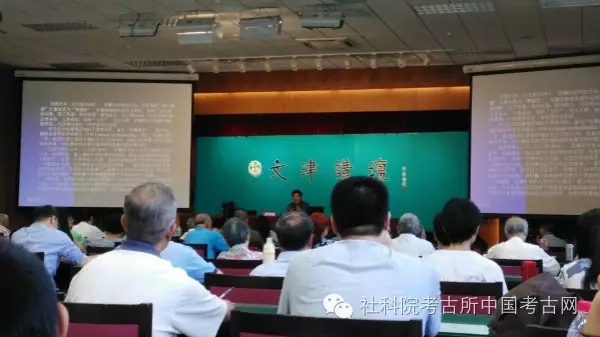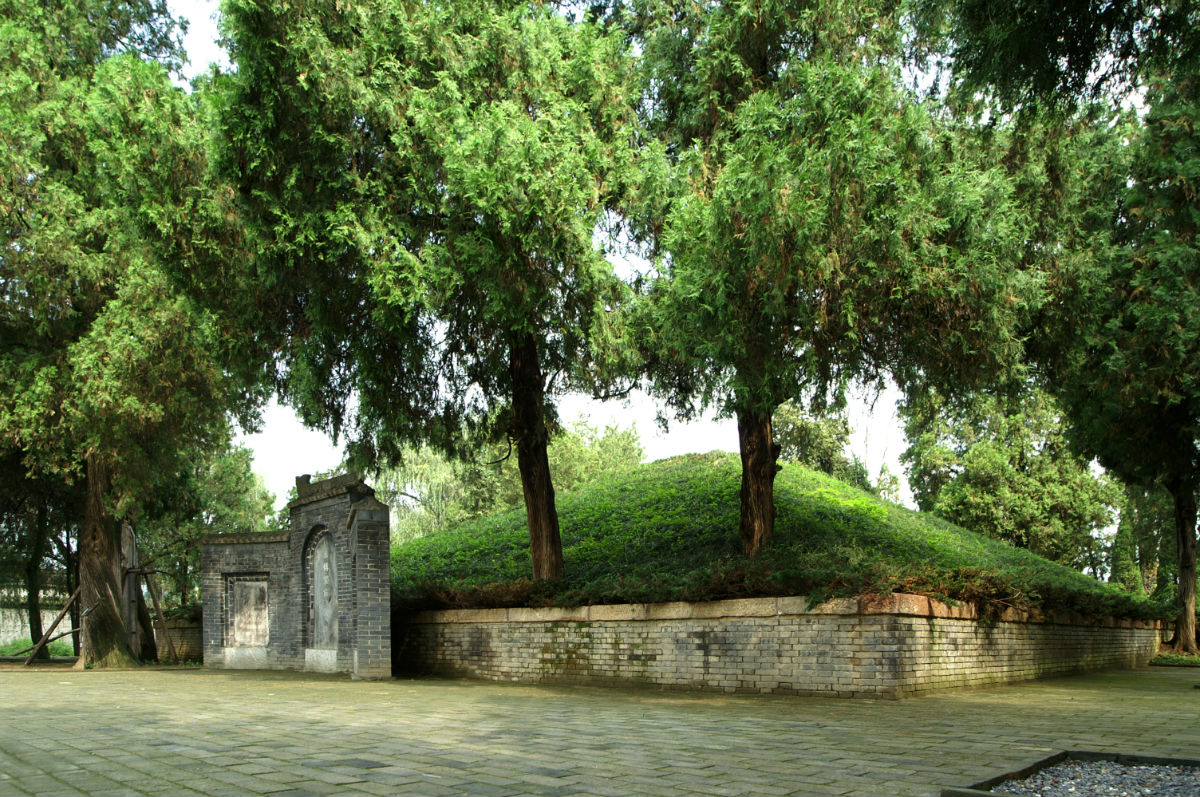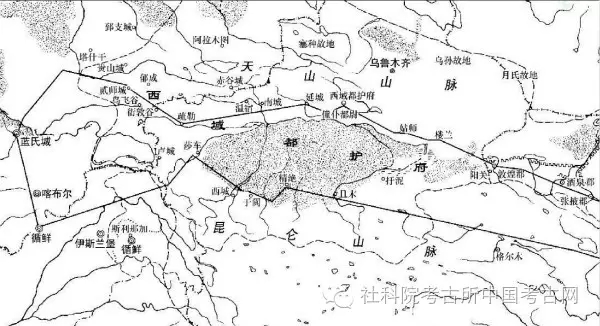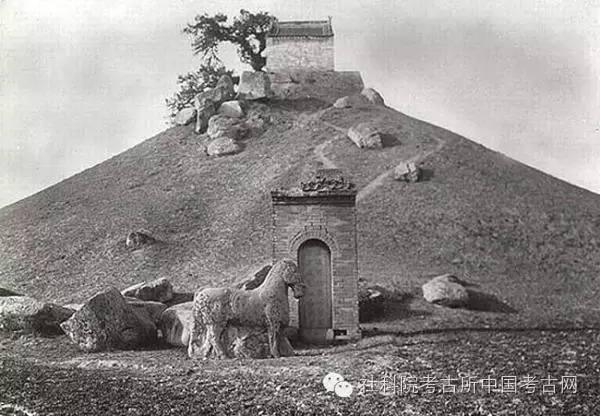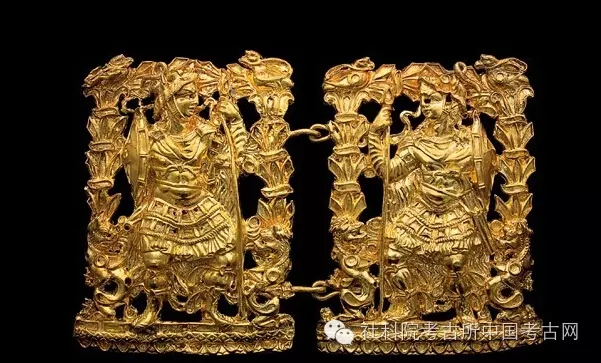DepthReading
Professor Lin Meicun claimed, Zhang Qian was detained in Tarim Basin, rather than in Mongolian Plateau
Translated by Yan Tiantian
On September 3,
professor Lin Meicun, who worked in the Department of Archaeology of Peking
University, was invited to give a lecture with the title of The Exploration of the Silk Road in the Lin Qiong building of ancient books
museum in national library.
What
are the differences of the two routes that Zhang Qian took to Xiyu (the Western
Regions)?
The main way of
cultural exchange between east and west before Zhang Qian’s going to Xiyu was
through Eurasian grassland. While after his mission to Xiyu, the silk road in
general was open. Although it is quite famous, it has long remained unclear
what the exact route that Zhang Qian took.
Zhang Qian was born in
Cheng Gu county, Han Zhong city of Shaanxi province. He was buried in Rao
Family villiage, Bo Wang town, about 3 kilometers far from his hometown. His
tomb shaped like an up-side-down funnel with its north-south length of 170
meters and its east-west length of over 80 meters. In the center of the tomb,
there is a huge square shaped earth mound of 20.6 meters from north to south,
16 meters from east to west and 2.3 meters in height. A pair of stone tiger of
Han Dynasty is standing in front of the tomb. Zhang Qian’s early records could
not be found in the history books. The only thing we knew was that before he
accepted the mission, he was an attendant. In 123 B.C., Zhang Qian was titled
as “Bo Wang Marquis” as a reward for he defeated Xiongnu people. Si Maqian, the
author of the Record of History,
spoke highly of Zhang Qian’s mission to Xiyu and named him as “ The Very First
One”. In 1877, Von Richthofen, a German geographer came up with the words “Silk
Road” and defined the time of openning it in 114 B.C., which was the beginning
time of the second time that Zhang Qian went to Xiyu. The east to the west route
that Zhang Qian took for the mission to Xiyu was the earliest Silk Road.
In 138 B.C., the third
year of Jianyuan when Emperor Wu of Han was on the throne, Zhang Qian heading
hundreds of people left Chang’an to Xiyu, hoping to jointly defeat Xiongnu people
with Da Rou Zhi people. However, in the middle of his mission, he was detained
by Xiongnu who treated him so generously that they made him settled there with
a wife and children. Always bearing his mission in mind, he fled away after 13
years’ captivity. After dozens of days’ westward traveling, he arrived at Dawan
country located in Fergana Valley. What we want to know is where Zhang Qian was
detained by Xiongnu people? Lin Meicun thought that Zhang Qian was actually
held in custody in Tarim Basin rather than Mongolian Plateau. Firstly, although
the conversations between Zhang Qian and
Xi ongnu ruler were recorded in The
Records of the Grand Historian, they could not prove that Zhang Qian was
detained in the palace of Mongolian Plateau. Zhang Qian must be withheld near
Da wan and in the south of Yi Li River, since firstly Xiongnu had two rulers:
Big Chanyu and Small Chanyu. Big Chanyu was stationed in Orkhon River of
Mongolian Plateau. The ruler who had the conversation with Zhang Qian should be
Small Chanyu who was in Tongpu of Tarim Basin. Secondly, Small Chanyu told
Zhang Qian that Zhi was in the north of
his place where was Yili River as it was in the north of Tarim Basin. The
westward migration of Rou Zhi was that from Dunhuang to Yili River and then to
A Mu River. At last, Zhang Qian specified that after ten and more days’
traveling, he arrived in Da Wan. It was impossible even for a modern man to
cost dozens of days to reach Da Wan from Mongolian Plateau but it was likely to
finish this journey from Tarim Basin.
Further more, what was the route that Zhang Qian took in his first mission to Xiyu? Dawan Commentary Section of the Historical Records mentioned a lot of names of places, such as Loulan ( LE ancient city of northeastern Luobupo), Gu Shi ( ancient city of Ruo Qiang Mai De Ke), Lun Tou ( ancient city of Lun Tai Zhuo Er Ku Te), Yu Ni ( ancient city of Tian Yuan Sha). However, Shu Le (Ka Shi) was not mentioned in the book. Therefore, we analyze that the route of Zhang Qian’s first toute is Lou Lan --- Gu shi --- A Ke Su and Wen Su --- Tu Er Ga Te Mountain Pass --- Fergana Valley.
Generally, it was more
convinient to travel from Chang’an ( present day Xi’an) to Da Wan ( Fergana
Valley) which was in the north of Turpan near the grassland by riding horses,
the main means of transportation. In hinderland of China, the nomandic and
agricultural boundary is the Great Wall. In Xinjiang province, Tian Shan
mountain was the boundary, the south of which was oasis farming, and the north
of which were prairie nomads. Why did Zhang Qian choose the farther way of
South Way? It was mainly for avoiding Xiongnu people. However, what he didn’t
expect was that he still was captured by them. This showed that Xiongnu people
was effectively in control of Tarim Basin.
Before Zhang Qian’s
second mission to Xiyu, Huo Qubin attacked Qilian Mountain. In 121 B.C.,
Emperor Wu in Han dynasty appointed Huo Qubin as the General of Agile Cavalry.
Huo Qubin headed the army going along the route of Bei Di, Ju Yan, Qi Lian Shan
Mountain and Dan Huan to attack Xiongnu. Xiongnu suffered a great loss and sang
sadly as “ Losing my Qi Lian Mountain makes my tamed animals unproductive.
Losing my Yan Zhi Shan Mountain disgraces our brides.” The Qi Lian Mountain
which was mentioned in the song in fact was Ba Li Kun Mountain in Ha Mi, Xin
Jiang. The tomb of Huo Qubin was built by simulating the shape of Qi Lian Shan
Mountain which was Ba Li Kun Mountain. Dan Huan was called “ Dun Hong Mountain”
which was “Bo Ge Da Peak” of Tianshan Mountain in the book Classic of Mountains and Seas. At that time, Da Rou Zhi people
lived in the north of Bo Ge Da Peak, while Wu Sun lived in the west. Later, Wu
Sun jointly defeated Da Rou Zhi with Xiongnu. After it, Da Rou Zhi moved
westwards to Amu River of central Asia, while Wu Sun was located in Yili River.
Huo Qubin attacked Qi Lian Shan Mountain which removed the threat of Xiongnu
people who appeared in the passage from Tianshan Mountain to Xiyu, providing
convinience for Zhang Qian’s second mission.
General Huo Qubing's Tomb
In 116 B.C., the first
year of Yuan Ding during the reign of emperor Wu of Han dynasty. The second
route Zhang Qian chose was different from the first one. He went along north
Tian Shan corridor of Silk Road. The basic route started from Chang’an, then went
through Dunhuang and Loulan, streched to Turpan Basin in the north. It went
westwards along northern part of Tian Shan and went through Yili River Valley
and Zhao Su Grassland, and finally ended in Du Chi Gu city of Wu Sun.
Why Didn’t Da Rou Zhi align with the
Government of Han Dynasty to Attack Xiongnu?
After Zhang Qian’s
first mission to Da Wan in Xiyu, the ruler there was delighted. He had long
heard of the abundance and vastness of Han empire, but due to the obstruction
of Xiongnu people, he had no access to send messengers to Han empire. He sent
the translators and guides to safeguard Zhang Qian, went via Kang Ju to reach
Da Rou Zhi.
Kang Ju was a Scythian
tribe in the north bank of Syr River. Scythians belonged to nomads who galloped
Eurasia and went eastwards to the north bank of Syr River. Between Syr River in
the north of central Asia and the south of Amu River, there was a region called
Sogdiana. Soghdians living in the south bank of Syr River was in the charge of
Kang Ju people. Therefore, they were misunderstood as “Kang Ju people”. The
origin of Soghdians was in Zerafshan River of Uzbekistan. In 329 B.C., when
Alexander the Great traveled eastwards to Da Xia (present-day afghanistan) and
North India (present-day Pakistan), he suffered fierce resistance from
Scythians. After Alexander conquered Scythians, he married Scythian princess
Roxane (Lu Shan Ni) and enhanced its ruling by marriage. An Lushan who started
An-Shi Disturbances used the same name. “Lu Shan” belonged to Scythian
language, meaning “brightness”. Generally, men were called “Lu Shan”, while
women were called “Lu Shanni” which was similar to “Bi Qiu” and “ Bi Qiuni”
in Buddhism. During Renaissance Period
in 16th century in Europe, the famous painter Raphael created a
famous painting named The Wedding of Alexander and Lu Zhenni.
The ruler of Kang Ju
was friendly to Zhang Qian, and he escorted him to the palace of Da Rou Zhi in
the north bank of Amu River. Da Rou Zhi was in the charge of the wife of the
former King ( or the prince), and the people there had conquered Bactria which was
in the south bank of Amu River. During the reign of the king of Da Xia,
Heliocles ( B.C. 145 – B. C. 130), unrest continously happened in Da Xia. Most
of the homeland was occupied by An Xi Empire and only Da Xia and southern
Sogdiana was left. Under the joint strike of Xiongnu and Wu Sun, Da Rou Zhi
people moved from Yili River to Central Asia. They first occupied He Zhong area
making the Scythians there move southwards to An Xi and Da Xia. During 140 B.
C. to 130 B. C., Da Rou Zhi conquered Da Xia. “The north of Du Gui River was
the King’s palace”. When Zhang Qian visited Da Xia ( in 128 B. C.), Da Rou Zhi
people were still in the north bank and Da Xia was a subject of Da Rou Zhi.
After Zhang Qian
returned to the Han Empire, Da Rou Zhi people went across Amu River and
destroyed Da Xia. Afterwards, western people called Da Rou Zhi as “Tocharian”
and their living place “Tokharistan”. But it was called “Da Rou Zhi” in Chinese
history book. Zhang Qian named the capital of Da Xia as “ Lan Shi City”, which
was Alexandra City, which was derived from Greek language Alexandria. During
over one years’ stay of Zhang Qian in Da Xia, he failed to persuade Da Rou Zhi
to jointly defeat Xiongnu with Han Empire, therefore, he had to return to Han.
In order to avoid Xiongnu,
Zhang Qian chose to go back to Han Empire through the Silk Road in the north
side of Kunlun Mountain. He prepared to go through Wa Vakhan Corridor,
Tashkurghan, Khotan ( He Tian, Xin Jiang), Yu Mi ( present-day Keriya,
Xinjiang), Qiang people’s tribe of Qing Hai and returned to Chang’an. However,
he was caught by Xiongnu people in Qiang people’s area. One year later, after
Chan Yu of Niongnu passed away, Zhang Qian returned to Chang’an with his wife
and servant Tang Yifu.
The route Zhang Qian
took in his first mission although did not reach the expected goal, it made
great differences. He introduced many countries’ situation in the west of Pamir
Mountains and knew that the southern part of Han Empire was Shen Du country (
present-day India). Shen Du country had civil trades with Sichuan and Yunnan.
The cloth from Sichuan and bamboo cane were transported to Da Xia through Shen
Du. He also noticed that there were no lacquer wares or silk in central Asia.
It was based on Zhang Qian’s records that Si Maqian’s Dawan Commentary Section of the Historical Records and Ban Gu’s Han Book, Xiyu Zhuan were written.
Gold artifacts unearthed from the "Gold Hill"
Zhang Qian’s second
trip to Xiyu was ended in Chi Gu city, Wu Sun’s capital, which remained
undiscovered. However, archaeologists found the tomb of Wu Sun’s King. It is a large-scale mound
tomb. From an archaeolgical view, the culture of Da Rou Zhi and Wu Sun was
divided by Bogeda peak, the east of which was Da Rou Zhi, belonging to Su Bei
Xi culture. While in its west was Wu Sun, belonging to the culture of mound
tomb.
Zhang Qian was warmly
welcomed by Wu Sun King in Wu Sun, but Wu Sun didn’t align with Han Empire for
fear of the power of Xiongnu. The king there only sent envoys to return to
Chang’an with Zhang Qian to express his thank to Emperor Wu of Han Empire. In
Zhang Qian’s second trip to Xiyu, he only reached Wu Sun, while his assistants
went to Da Wan, Kang Ju, Da Rou Zhi, Da Xia, An Xi, Tiao Zhi, Yan Cai, Shen Du,
Yu Tian and Yu Mi, etc. Since the Zhang Qian notices that there was no lacquer
or silk during his first trip, he took a plenty of silk on his second trip.
This was the first batch of Chinese silk traveled to western countries through
the Silk Road and was recorded in history.
In 1842, a trove of
cultural relics were discovered in the Crimean Peninsula of east Europe, one of
which was plain structured dark floral silk in Han Dynasty, namely, “Qi”
recorded in the literature of Han dynasty. “Qi” was
renamed as “Ling” after Wei and Jin dynasties. The assistants of Zhang Qian
reached Yan Cai near Caucasus Kuban
River, which was Crimea. The silk of Han Dynasty discovered here should be
transported to Eurasian grassland in the same period of time of Zhang Qian. In
the 7th tomb of the graveyard in Yingpan, Xinjiang, this kind of
silk was excavated. The figure of priestess wearing transparent silk clothes
could be found in the fresco of Pompei Ruins in Italy.
In 1978, archaeologists from
the Soviet Union and Afghanistan jointly discovered the famous “Tilia Tepe” (
the golden mound). “Tilia” means “gold”. “Tepe” is a Turkic language, meaning
“earth mound”. There were nine tombs in total but after excavating the sixth
one, the excavation work was suspended by the the Soviet Union’s intrusion into
Afghanistan. This tomb was built around 1 century B. C. and over 20,000 golden
wares embeded with turquoise and carnelian were excavated. The six tombs
unearthed included five tombs for women, one for man. A recent study showd that
a least a half of the six tombs for women should be the ruler of Da Rou Zhi, as
it has the tradition that women were the ruler of the country. As for the owner
of the man’s tomb, Lin Haicun believed that Gui Shuang’s first ruler, recorded
in history book, was Qiu Jiuque’s father. These tombs were case-like wooden
coffin, the shape of which was similar to wooden coffins discovered in Niya
ruins in Xinjiang. Apart from golden wares, coins from Anxi, Roma and India as
well as copper mirrors from China displayed complex and multiple culture in the
tombs. With so abundant golden treasure and delicated making procedures, it was
reasonable that Da Rou Zhi was unwilling to align with Han Empire to be enemy
with Xiongnu.
Category: English
DepthReading
Key words:

